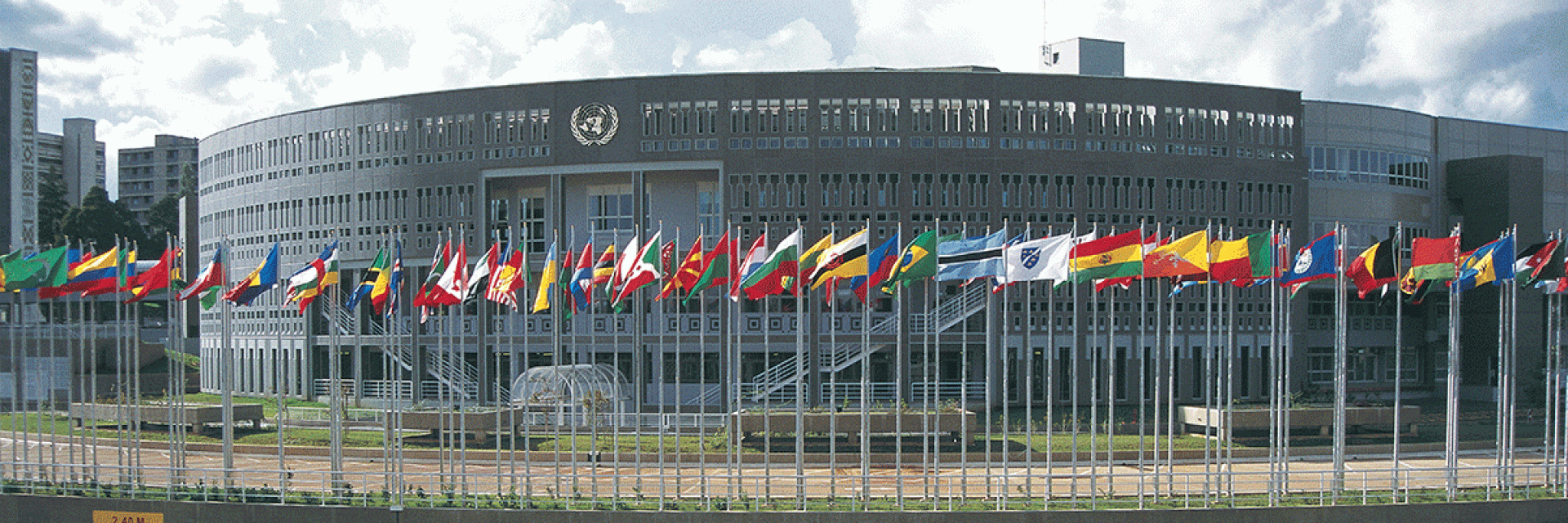Awareness Raising of the Global Compact for Safe, Orderly and Regular Migration and Sendai Framework for Disaster Risk Reduction - At The 8th Session of the Africa Regional Forum on Sustainable Development
Introduction
The 2022 Africa Regional Forum on Sustainable Development (ARFSD) will take place on the theme, 'Building forward better: A green, inclusive and resilient Africa poised to achieve the 2030 Agenda and Agenda 2063.' The Forum is being convened by the UN Economic Commission for Africa (ECA) ahead of the High-Level Political Forum (HLPF) 2022. As part of the Forum, UNECA seeks to raise awareness on the role the Sendai Framework for Disaster Risk Reduction (SFDRR) and the Global Compact for Safe, Orderly Migration (GCM) on achieving the Sustainable Development Goals (SDGs).
The aim of the Sendai Framework stated as a goal is to ‘substantial reduction in disaster risk and losses in lives, livelihoods and health and in the economic, physical, social, cultural and environmental assets of persons, businesses, communities and countries’. The stated outcome is ‘ Prevent new and reduce existing disaster risk through the implementation of integrated and inclusive economic, structural, legal, social, health, cultural, educational, environmental, technological, political and institutional measures that prevent and reduce hazard exposure and vulnerability to disaster, increase preparedness for response and recovery, and thus strengthen resilience ’.
In addition, the Sendai Framework outlines four priorities of action, seven targets to reduce and prevent disaster risks including through governance, investment in resilience, and disaster preparedness, response, recovery and rehabilitation. In line with the SFDRR, Africa Uniuon developed the the Programme of Action (PoA) for the implementation of the Sendai Framework is supporting implementation of DRR in Africa in 2017. By adopting the PoA and making declarations, Africa Union Heads of States and Governments have continued to express strong commitment to the implementation of DRR in the continent to ensure resilient and inclusive economic growth. Unfortunately, the PoA observes that exposure to hazards and vulnerability to disasters are on upward trajectory partly due to climate change, unplanned settlements, poverty, environmental degradation and conflict . This has contributed to increased disaster losses requiring increased understanding of risk and its implication on inclusive economic growth.
Therefore, the SFDRR presents unique opportunities to safeguard hard won development gains from disasters if integrated into development frameworks. This is achieved by disaster – proofing infrastructure, protection of livelihoods and services from the devasting impacts of disasters that would derail development and divert scarce resources to respond to emergencies. Implementation of the Sendai Framework is mutually reinforcing the implementation of the SDGs, the Paris Agreement and Global Compact for Migration (GCM). The Frameworks calls for governments with support from stakeholders to ensure risk, that can derail hard-won development gains if materializes, is reduced and prevented.
Similarly, the GCM, adopted in 2018 under the auspices of the UN, complements the SFDRR and SDGs by addressing migration and displacement in a holistic and comprehensive manner. The implementation of the GCM, brings about ensuring effective respect for and protection and fulfilment of the human rights of all migrants, regardless of their migration status, across all stages of the migration cycle.
The GCM enumerates 23 objectives for State action, bolstered by specific commitments, that seek to address challenges related to today’s migration. The commitments and actions can be seen as a guide for States to meet their human rights obligations when designing human ru=ights-based, gender-responsive as well as child - responsive migration governance measures that reduce the risks and vulnerabilities migrants face at different stages of migration. This requires creating conducive conditions that empower all migrants, particularly women, youth and children, to become active members of society. In general, the Compact aims at guaranteeing the safety of life, the protection of people, the safeguard of human rights, the sharing of rights and duties of the states and the reinforcement of migration flows governance. Furthermore, the GCM permits States to translate abstract commitments into practical, cooperative action on specific migration issues.
Thus, the GCM, similar to the Sendai Framework, encourages the need to strengthen joint analysis and sharing of risk information to better map, understand, predict, and address migration movements, such as those that may result from sudden-onset and slow-onset natural disasters . This requires understanding disaster risks so as to avert displacement risk by reducing exposure and vulnerabilities in coherent with the SFDRR priority one. In addition, the GCM considers the adverse effects of climate change, as well as developing adaptation and resilience strategies, that take into account the potential implications on migration.
It is important to note that the restrictions imposed to contain the COVID -19 crisis have had positive and negative impacts on migration in the short term and even up to the long term in Africa. As a result, there has been reduced out-migration, increase in immigration and reduced remittances across the continent with reduced economic activities at local levels . The short-term gains from reduced Green House Gas emissions due to reduced mobility and other restrictions will have positive short-term impact on achieving the climate change commitments but the resultant economic recession will likely impact on reduced investments in risk reduction and resilience building in the long term and hence may trigger more vulnerabilities to migration and displacement in the future. This calls for coherent and comprehensive economic stimulus measures are enacted by governments. By addressing migration and displacement, the two frameworks present a unique policy response to ensuring growth is inclusive and no one is left behind as required by Target 10.7 of the SDG.
Documents

